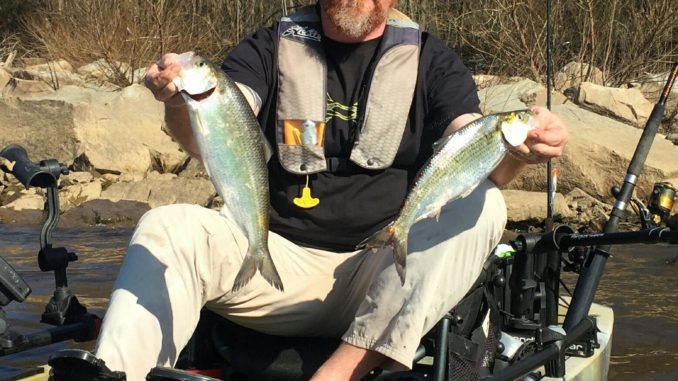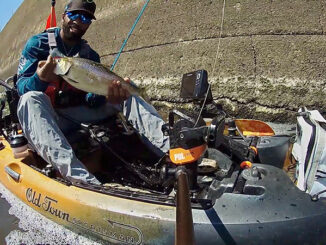
Cape Fear River holds loads of fish
The Cape Fear River has a variety of fishing opportunities, and one of the spring highlights is shad, striper and catfish action in the tailwaters of Lock and Dam No. 1 about 20 miles upriver from Wilmington, N.C.
While there is a rock-arch fish ladder for fish to cross the dam to move upstream to spawn, this is the first place heading up the Cape Fear that impedes their progress and congregates fish.
From late March through April — and sometimes into early May — shad fishing in the tailwaters of the dam is excellent, with some stripers and catfish thrown in.
Lock and Dam No. 1 is a U.S. Army Corps of Engineers facility; its tailrace waters are accessed from a ramp in a protected area just below the dock, and from a fishing pier a hundred yards or so downstream.
The shad migration typically begins in March, but with the warm winter this year, they arrived by mid-February. There hasn’t been much rainfall inland in the Cape Fear basin, so the flow is less than optimal for the migrating fish. This may benefit fishermen by keeping the fish congregated at the base of the dam longer.
Large American shad and smaller, acrobatic hickory shad are the stars of this show. Both are great fun on light tackle, and hickory shad run and jump trying to shake the hook, which has earned them the nickname of “poor man’s tarpon.” Hickory shad average a pound or so, while American shad might exceed 5 pounds.
Small, bucktail shad darts and small spoons are the long-time standard lures for catching both shad species. Some fishermen like their spoons dressed with a small feather or light bucktail.
Jonathan Grady of Yak’N Off Outdoors (910-818-0587) often fishes Lock and Dam No. 1 by kayak. He really likes a double- drop rig that uses chartreuse, 1- or 2-inch curlytail grubs.
“I like the versatility of my kayak for fishing here,” Grady said. “Most fishermen anchor, but I like to move around and fish different areas ‘til I find a pocket holding fish. I focus on current seams, breaks and funnels coming off the dam.
“There are stripers and catfish following the shad,” Grady said. “Most times I put my shad outfit in a rod holder with the line only a few feet behind the kayak and cast a large swimbait. If catfish are active and hitting the lure, I’ll put a strip of shad on a jighead and fish it like an artificial lure.”
Grady said to pay attention to tagged fish. The state does shock surveys below the dam and tags stripers and shad. Yellow tags have a $5 reward and red tags are worth $100.
Fishermen can visit the Corps of Engineers website (www.saw.usace.army.mil) and follow the flow charts to pick the best fishing times. Grady suggested 3,000 cubic feet per second as a good average flow rate.





Be the first to comment